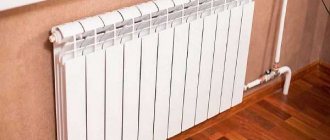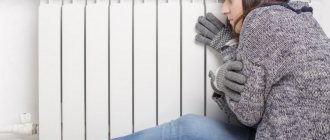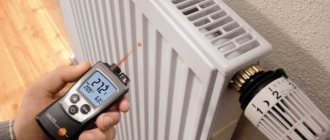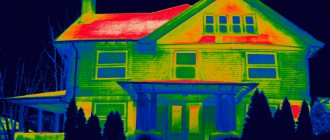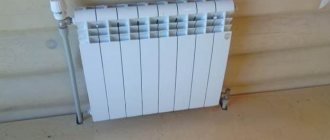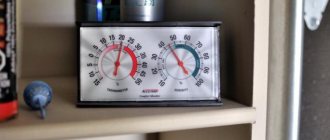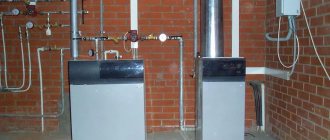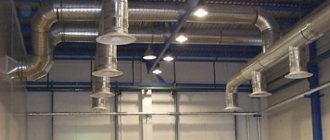Experts calculated the optimal lighting standards for residential premises and reflected them in SNiP (SP) standards, characterizing them in Lumens and Watts. If there is not enough light in the room, it has a detrimental effect on health. Moreover, residential lighting standards also take into account natural light per square meter, which is necessary for the eyes and body.
Lighting according to SNiP and SanPiN standards
In the dark, it is necessary to connect artificial sources, which should be as close in power to natural parameters as possible.
Types of lighting
Modern technologies make it possible to install not only central lighting in rooms, but also additional lighting. This approach allows you to control the luminous flux by setting the desired lighting power. The following types of lighting are distinguished:
- directional - main sources - chandeliers, floor lamps, lamps;
- diffused – additional light sources mounted on ceilings and walls.
LED lamps in the apartment
The combination of these two types of lighting in rooms allows you to create ideal indoor conditions for work and relaxation.
Impact of the wrong light
Light is a necessary condition for a comfortable human life. Sanitary doctors have calculated standards and criteria for residential premises that have a beneficial effect on human health and mental state.
Recommended standards for the desktop
In apartments, windows are provided for natural light, but at night it is necessary to turn on artificial lighting. Lack of light in living rooms can lead to the following deviations:
- irritability and fear;
- headache;
- decreased performance;
- fatigue;
- insomnia;
- fatigue and redness of the eyes;
- exacerbation of chronic diseases.
Dim light in the room
Children suffer the most from lack of lighting in living rooms. If they have to do homework, read or play, or use gadgets in poor lighting, they may develop visual impairment.
Over the years, this problem will only get worse. Therefore, in a child’s room it is important to consider multi-level lighting of the room in order to illuminate the room, work and play area.
Adjustment depending on heating system mode
Manufacturers indicate the maximum power of radiators in the passport data: in high-temperature mode of use - the coolant temperature in the supply is 90 o C, in the return - 70 o C (indicated by 90/70) in the room there should be 20 o C. But in this mode, modern systems The heating works very rarely. Typically, a medium power mode of 75/65/20 or even a low temperature mode with parameters of 55/45/20 is used. It is clear that the calculation needs to be adjusted.
To take into account the operating mode of the system, it is necessary to determine the temperature pressure of the system. Temperature pressure is the difference between the temperature of the air and the heating devices. In this case, the temperature of the heating devices is considered as the arithmetic average between the supply and return values.
It is necessary to take into account the characteristics of the premises and climate in order to correctly calculate the number of radiator sections
To make it clearer, we will calculate cast iron heating radiators for two modes: high temperature and low temperature, standard size sections (50cm). The room is the same: 16m2. One cast iron section in high temperature mode 90/70/20 heats 1.5m2. Therefore, we need 16m2/1.5m2 = 10.6 pieces. Round up - 11 pcs. The system plans to use a low temperature mode of 55/45/20. Now let’s find the temperature difference for each of the systems:
- high temperature 90/70/20- (90+70)/2-20=60 o C;
- low temperature 55/45/20 - (55+45)/2-20=30 o C.
That is, if a low-temperature operating mode is used, twice as many sections will be needed to provide the room with heat. For our example, a room of 16 m2 requires 22 sections of cast iron radiators. The battery turns out to be big. This, by the way, is one of the reasons why this type of heating device is not recommended for use in networks with low temperatures.
With this calculation, you can also take into account the desired air temperature. If you want the room to be not 20 o C but, for example, 25 o C, simply calculate the thermal pressure for this case and find the desired coefficient
Let's do the calculation for the same cast iron radiators: the parameters will be 90/70/25. We calculate the temperature difference for this case (90+70)/2-25=55 o C. Now we find the ratio 60 o C/55 o C=1.1. To ensure a temperature of 25 o C you need 11 pcs * 1.1 = 12.1 pcs.
Residential illumination standard: W per m2
Experts have developed special light standards for living rooms (W/m²), which are shown in the document SNiP 05/23/95. It is called “Natural and artificial lighting”.
Standards for SNiP (SP) and SanPiN
They contain recommendations for residential premises, as well as for offices, schools, kindergartens, hospitals, boiler rooms and other premises. These standards apply in Russia, Ukraine, and many European countries.
Lamps and light indicators
Lighting standards are indicated in lux. And the flux of light is measured in Lumens. 1 lux = 1 Lm/m² (Lumens per square meter).
Types of lamps
The 2022 SanPiN standards indicate the indicators of incandescent lamps, the so-called “Ilyich bulbs”. But now you rarely see them on sale. Manufacturers produce halogen, fluorescent, ice (LED), LED and gas-discharge lamps.
They consume less power according to standards, producing a greater flow of light. To convert the values from the standards of the SNiP table, it is necessary to make small calculations.
Comparative luminous flux indicators are given in Table 1.
| Incandescent lamp power, W | Fluorescent lamp power, W | LED lamp power, W | Luminous flux, Lumen |
| 20 | 5–7 | 2–3 | 250 |
| 40 | 10–13 | 4–5 | 400 |
| 60 | 15–16 | 8–10 | 700 |
| 75 | 18–20 | 10–12 | 900 |
| 100 | 25–30 | 12–15 | 1200 |
| 150 | 40–50 | 18–20 | 1800 |
| 200 | 60–80 | 25–30 | 2500 |
The table shows that the most economical energy consumption is LED lamps.
Taking into account the reflectance of surfaces
Finishing materials absorb light differently; the degree of reflection depends on the color and texture of the surface. This property affects the overall level of illumination of the room, so adjustments are made after calculations.
Surfaces have a certain reflectance, which is roughly divided into five groups:
- 70% is white.
- 50% - other light colors.
- 30% - gray.
- 10% - dark colors.
- 0% - black.
Typically, finishing materials of different colors are chosen (flooring, wallpaper, stretch fabric). To simplify the calculations, first find the average reflectance. To do this, add up the numbers that characterize the walls, floor and ceiling, and then divide by 3.
For example, in the room there is a white stretch fabric, pale wallpaper on the walls and medium-dark parquet. We calculate:
70% + 50% + 30% = 150%
150% / 3 = 50%, or 0.5.
In further calculations, the luminous flux value for the light bulb is multiplied by 0.5. For example, if you choose LED devices with a nominal value of 560 lumens, you need to substitute 280 Lm into the formula.
Illumination standards
For all rooms in an apartment, SanPiN establishes its own standard for illumination of residential premises in any area. So, in the office and in the pantry these indicators will vary.
Lamp options
There is no need for powerful lighting in a small nook where rarely used items are stored. But the lack of light above the workplace can lead to decreased performance and deterioration of well-being.
In 2022, the standards given in Table 2 were approved.
| Room | Illumination, Lux |
| Living rooms (bedroom, living room, kitchen) | 150 |
| Corridor | 50 |
| Children's room | 200 |
| Library, study, billiard room, office | 300 |
| Wardrobe | 75 |
| Swimming pool, locker room, escalator, stairs | 100 |
| Gym | 150 |
| Staircase at the entrance | 20 |
| Lift shaft | 5 |
| Basement, attic, technical rooms | 20 |
| Office where drawing work is carried out | 500 |
Calculation of illumination according to standards
When organizing lighting in a living room, you need to calculate the number of lighting fixtures according to the standards so that it is comfortable to be in the room. SanPiN standards offer several calculation options for residential premises.
SNiP (SP) table for various premises
Based on the area of the room
A 25-watt light bulb is installed per square meter. So, for a room of 15 m², the light norm is calculated as 25 x 15 = 375 W.
This means that it is necessary to install 2 lamps of 150 W and one of 75 in this area if the room requires intense lighting.
You can use the table of recommended illumination
Experts have developed recommended lighting standards shown in Table 3.
| Light type | Room | W/m² |
| Muted | Bedroom | 10–12 |
| Average | Cabinet | 15–18 |
| Bright lighting | Living room | 20 |
This table shows the standards for incandescent lamps. If you use other lighting options, you must select the desired voltage.
An example of calculation for a study area of 20 m².
20 m² x 15 W/m² = 300 W
Total 2 lamps of 150 W or 3 of 100 W.
In the evening
Calculation taking into account ceiling height
This option for calculating lighting per 1 sq. m in an apartment is more accurate, because it takes into account a correction factor for the ceiling height, which can be taken from Table 4.
| Ceiling height, m | Coefficient |
| Up to 2.7 | 1 |
| 2,7–3 | 1,2 |
| 3–3,5 | 1,5 |
| Over 3.5 | 2 |
Here the calculation is made using the formula:
H x S x K = SP, where:
SP – light flux, Lumen;
N – standard from SNiP;
S – room area, m²;
K – correction factor.
For example, for a bedroom with a standard of 150 lux with an area of 17 m2 and a ceiling height of 2.5 m, it will be calculated as follows:
150 x 17 x 1 = 2550 Lm.
Characteristics of incandescent, fluorescent and LED lamps
For the specified room, a luminous flux of 2550 Lumens is required. Manufacturers indicate this indicator on the packaging. Values may vary from supplier to supplier and should be checked with the store. Thus, a 12-watt LED lamp has a luminous flux of 900 lm.
Main conclusions
Artificial light is of great importance for humans; it should resemble natural light as much as possible. Otherwise, the person suffers from headaches, drowsiness, irritability, decreased performance, and blurred vision. To avoid this, you need to find out how many lumens per 1 m² you need. To do this, you should study the illumination standards of a certain room, do not confuse Lm with Lk and carefully carry out the calculation. Then you can correctly determine the number of lighting fixtures for uniform illumination. To adjust the brightness of the light, install a separate switch for each lamp.
Warm or cold
Natural daylight has a warm spectrum. It is comfortable for the eyes and body. But manufacturers produce lamps with a cold and warm spectrum, which have their own effect on the body.
Natural and LED lighting
Let's note the most important points:
- According to the standards, cold glow is recommended for work areas. It increases concentration and tones the body.
- A warm glow is installed in the relaxation areas. According to the norms, it helps to relax and calm down.
- Neutral light is the best option for a children's room and for any other room.
Comparative characteristics
It is important to take into account that the yellow and blue spectrum distort color perception, unlike natural light.
On the packaging, the light temperature is indicated in Kelvin (K). The yellow (warm) spectrum ranges from 2700–3500 K. The blue (cool) spectrum ranges from 5000–5400 K. Average values refer to natural (neutral) light.
Heat transfer coefficient for different materials
Heat transfer in materials with a high heat transfer coefficient occurs more intensely than in materials with a low coefficient. The value of the coefficient depends on the properties of the material, its temperature, the area that transfers heat, and other conditions.
A window air conditioner is a good example of a unit that has very efficient heat exchangers. When cooling, they use the process of changing the state of aggregation of a substance. When a liquid turns into gas, it consumes a large amount of heat and takes that heat away from the room, thereby cooling it.
The heat transfer coefficient also depends on the amount of layers, deposits and sediment on the surface - usually outside and inside the heat exchanger pipes. This can be either simply contamination, in the case of plaque, or fouling
— in case of biological fouling of an object by microorganisms or mollusks. Plaque usually forms due to corrosion, or when sediment dissolved in a liquid settles on the surface of heat exchangers. Sometimes these impurities in a liquid are due to its contamination, and sometimes they are part of the liquid, for example, they can be salts dissolved in water.
The parts of the heat exchanger that must conduct heat well or, conversely, poorly, are made of materials that are usually selected for their thermal conductivity. In some cases, thermal conductivity is not the most important criterion by which these materials are selected. Sometimes the price and ease of manufacturing parts from one material or another play a big role in the choice. For example, despite the fact that aluminum has a lower thermal conductivity than copper, radiators in cars are now mainly made of aluminum due to its low price. This was not always the case - previously radiators were made of copper, and now such radiators can still be ordered from some manufacturers.
Window air conditioner condensing heat exchanger. The condenser is cooled by a fan, and as it does so, the refrigerant gas inside condenses and turns into a liquid. In this case, heat exchange occurs with the environment, into which heat is released from the room.
Besides the price, another inconvenience in using copper is that products made from it are heavier than products made from aluminum. This matters, for example, for racing cars. When deciding what to make a radiator from, it is worth weighing all the advantages of aluminum and copper, and not based solely on their thermal conductivity.
